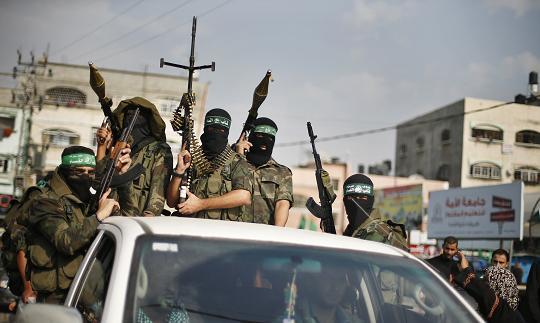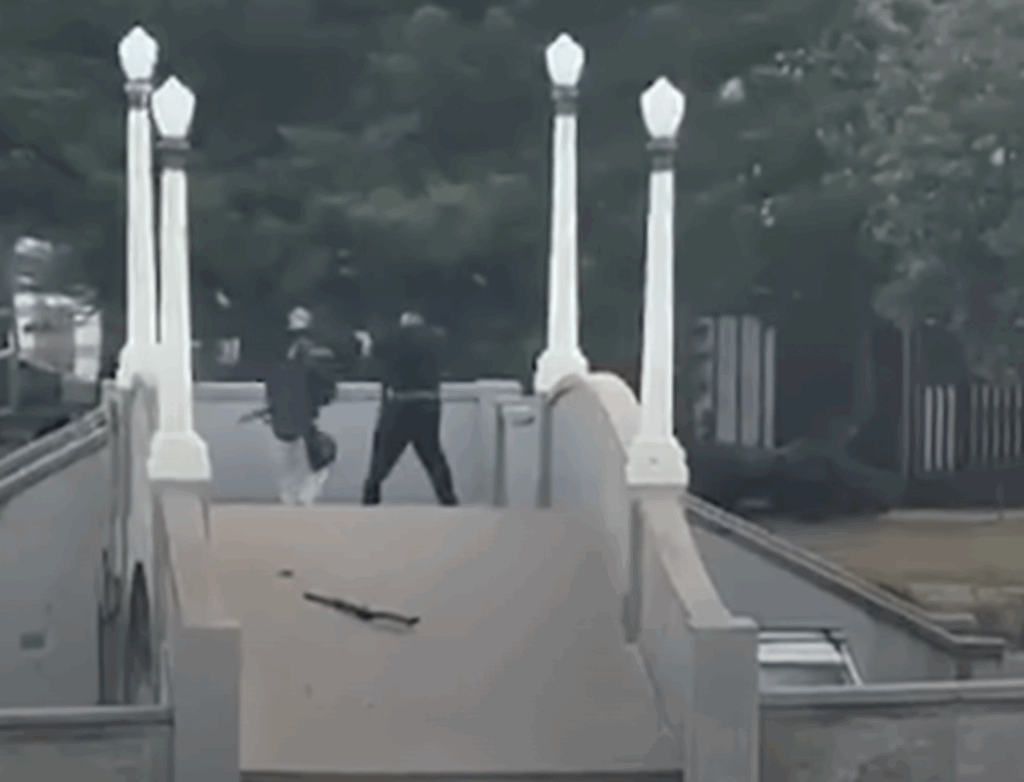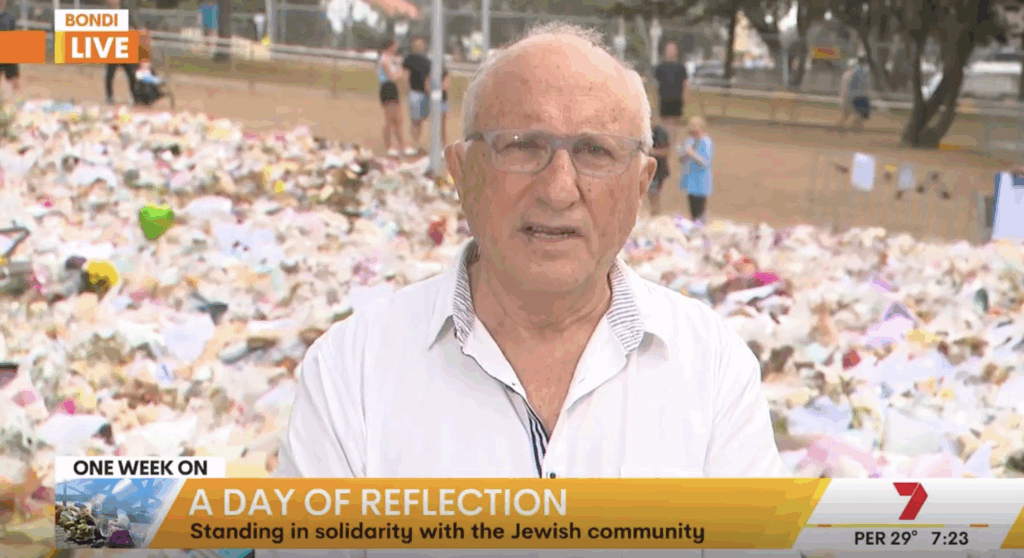UPDATES
A Demilitarised Gaza?/ Hamas’ capabilities
August 1, 2014

Update from AIJAC
August 1, 2014
Number 08/14 #01
With a 72-hour humanitarian ceasefire coming into effect in Gaza a couple of hours ago, along with plans to spend the three days on intensive efforts in Cairo to negotiate something more lasting, this Update focuses on the prospects and modalities of Israel’s key demand for the conflict’s outcome, Gaza’s demilitarisation – a policy also supported in principle both by US President Obama and Secretary of State John Kerry. It also includes some new valuable background material on Hamas’ military capabilities and tactics in this conflict so far.
First up is former Israeli defence minister and general Shaul Mofaz, who argues that demilitarisation is the only practical way to end the repeated bloodshed created by Gaza conflicts. He notes two different ways to achieve this – either through an expensive Israeli military effort or through an international diplomatic arrangement. While he agrees the latter will be tricky and reviews a number of the complexities, he argues that the political route is both preferable and achievable if Israel forces Hamas’ back against the wall. For his complete argument, CLICK HERE. Another argument that demilitarisation of Gaza is feasible comes from noted Israeli security reporter and author Yossi Melman.
Next up is another top former Israeli general – Amos Yadlin, now chairing the Israeli Institute for National Security Studies (INSS) at Tel Aviv University. In a piece in the New York Times, he argues that a three stage process can lead to Gaza’s effective disarmament – increasing Israeli military pressure to force Hamas to accept a reasonable ceasefire, a clause in the ceasefire which bars Hamas’ re-armament, and a renewed role for the Palestinian Authority in Gaza post-conflict, something Hamas had already conceded in principle before the current conflict broke out. Later there would be a gradual lifting of the Israeli and Egyptian blockade and a “mini-Marshall plan” to rebuild Gaza. Yadlin argues that such a political arrangement is both desirable and feasible. To read all the details, CLICK HERE. Yadlin also wrote a longer piece for the INSS which expands further on these points.
Finally, Elhanan Miller of the Times of Israel wrote a good compilation of what is known about Hamas’ military capabilities, where it got them and how it has been using them in the current conflict. He briefly describes the rockets, the number of Hamas fighters, how and where they were trained, and the tunnels and how they were built. He also discusses Hamas’ tactics against the IDF in the current war, which involves little direct combat and heavy use of anti-tank weapons and Improvised Explosive Devices (IEDs). For this valuable backgrounder in full, CLICK HERE.
Readers may also be interested in:
- Following up on yesterday’s AIJAC op/ed in the Australian detailing signs that journalists in Gaza are being intimidated against reporting what Hamas does not want reported,
- Robert Ellenhorn on yet more evidence from revelations about the Hamas terror tunnels that Hamas is deploying its military assets in civilian buildings.
Gaza demilitarization is vital
Shaul Mofaz
Israel Hayom, July 30, 2014
Operation Protective Edge marks the third round against Hamas in the last five years. In reality, we are in one long never-ending war of attrition, whose intensity is only growing. This war is eroding Israeli deterrence against its near and distant enemies, and it must end decisively.
The security situation demands an unequivocal victory. Israel must not repeat the mistake of the “Pillar of Defense understandings.” Understandings of this kind should be rejected outright. They don’t hold water and Hamas is doing everything in its power to undermine them. In every sense of the word.
To return security to Israelis and to residents of the south in particular, we must reach a situation where Gaza has been disarmed of missiles, rockets and attack tunnels. We must secure an end to this war of attrition, and we have the full legitimacy to do so. There isn’t a country out there that wouldn’t agree that if a terrorist organization was camped on its border, it would disrupt the everyday lives of its citizens, endangering their lives over the years.
Demilitarization is a must. If it isn’t done through a political arrangement, it must be executed through force.
Three weeks ago, during a session of the Foreign Affairs and Defense Committee attended by Prime Minister Benjamin Netanyahu, I presented the idea of demilitarization as a definitive answer for Israeli security needs. It was at the beginning of the operation, yet agreement was already widespread. Netanyahu was very attentive in subsequent meetings, and ever since he has firmly promulgated, without compromise, the Israeli demand that our country shall no longer live under threat.
The results weren’t late in coming — Western countries were recruited and have demanded that Hamas disarm. But this demand must involve a trade on Hamas’ part, a package that is economic, humanitarian, and significant enough to have an impact on Gazan citizens, while ensuring Hamas has no access to it. In other words, money that would be transferred from partner countries for an arrangement that would be funneled into infrastructure, welfare, health care, housing and employment. Such a package has strategic potential. It is important that Palestinians in Gaza will have something to lose; it is important that they be convinced that if terrorism ceases, they will benefit, greatly.
Demilitarization through international diplomatic means is a tricky business, but the advantages significantly outweigh the risks. A process such as this affirms Israeli determination to quash terrorist groups and significantly bolsters future Israeli legitimacy. Demilitarization would both bring about stable security and lay the foundations for a long-term regional arrangement, after the war. In any future agreement with the Palestinians, the principle of demilitarization will be a cornerstone, from the security perspective.
If they’d told us a year ago that Syrian President Bashar Assad would agree to remove chemical weapons from Syria, we would have snickered skeptically in response. But it has been proved that the mechanism of combined military and international pressure — the carrot and the stick — works. It will work in Gaza, too.
Obviously Hamas will object, but it is forbidden for Israel to concede its security demands. We must utilize the fact that we are not alone: The moderate Arab nations have a clear interest in Gaza’s demilitarization, as does Egypt, Palestinian Authority President Mahmoud Abbas, the U.S. and other Western nations. We are all wary of extremist Islam and we are all interested in weakening Hamas, to say the least.
We are in the midst of a very difficult battle, which has exacted a heavy and painful price from us. The IDF has forcefully struck against terror and the nation of Israel has united behind the army; tremendous pride wells up in our hearts.
But now it’s up to us to exhaust all military actions against Hamas. We must force its back to the wall, where it will have no choice. The opportunity to demilitarize through a diplomatic arrangement exists, the civil infrastructure is ready and Israel is united behind its position. In any case, if estimates of the situation predict that diplomatic efforts will fail, Israel could always make the bold decision to pay a higher price and demilitarize Gaza by force.
Today marks 30 days since the three teenage boys who were kidnapped and killed in cold blood were interred. Our national mourning continues to pour forth with the flow of bad tidings, with every flower that is plucked. We bite our lips in pain over the Israeli heroes who never made it off the battlefield, and we remember their legacy — a strong nation of Israel, a victorious country.
MK Shaul Mofaz is the chairman of the Kadima party and a member of the Knesset Foreign Affairs and Defense Committee.
Back to Top
————————————————————————
To Save Gaza, Destroy Hamas
New York Times, July 25, 2014
TEL AVIV — AFTER nearly three weeks of fighting — notwithstanding the 12-hour pause announced early this morning by Israel — it is time to revisit some basic assumptions about Hamas. Until now, Israel assumed Hamas was the “devil we know,” capable of attacks that were mostly a nuisance; accepting its rule over the Gaza Strip was preferable to risking a vacuum of governance like what we see in Somalia and Libya. But Hamas’s reckless violence in the current round of fighting severely undermined this thinking.
First, Hamas has proved a bad ruler. By placing many of its military assets — tunnels to infiltrate Israel, bunkers for its fighters, rocket launchers to terrorize Israeli civilians — under or among mosques, hospitals and schools, Hamas turned Gaza’s civilians into a shield for its military assets, in effect daring Israel to attack them. Then it cynically turned the predictable casualties that ensued into propaganda, and rejected cease-fire proposals, notably an Egyptian plan accepted by Israel, the Arab League and the international community. Last week, Mohammed al-Arabi, a former Egyptian foreign minister, accused it of “shedding the blood of innocent Palestinians.”
The latest round of warfare showed that Hamas had become more dangerous, and its offensive capacity stronger, than we had known. Its ability to threaten Israeli towns through its tunnels and to rain rockets on Israeli cities raised what had been a nuisance to a challenge of strategic proportions.
For these reasons, Hamas’s rule over Gaza must be brought to an end, its military wing disarmed, and Gaza’s people given the chance to elect new leaders.
This can be done in three stages:
First, Israel has every right to intensify its campaign until Hamas’s leaders agree to a cease-fire. Israel’s forces must step up the pressure on Hamas, so that its leaders feel the encirclement tightening. (So far, Israel’s incursion has destroyed more than two dozen offensive tunnels, reduced rocket fire at Israeli civilians and collected important intelligence.) Second, any cease-fire must carry the condition that Hamas cannot rearm. Third, the Palestinian Authority must regain a share of power in Gaza, so that new elections can be held.
These measures could clear the way for Gaza’s reopening to the world, so that its people could at last prosper in peace.
All of this can be achieved because of a fundamental change in Middle East politics: For perhaps the first time, there is a true convergence of interest among Egypt, Saudi Arabia, the Palestinian Authority and Israel in limiting the spread of Islamist extremism.
Remember that it was the Palestinian Authority, not Hamas, that governed Gaza following Israel’s complete withdrawal from the territory in 2005. After a divisive election a year later, Hamas seized sole power in Gaza in 2007. For an enduring peace, Israel should quietly promote a resumption of control in Gaza by the Palestinian unity government, with international support. If Israel succeeds in tying a cease-fire to an immutable ban on rearmament by Hamas, government by a unified leadership of technocrats— as the Palestinian Authority and Hamas agreed to on July 3 — should be encouraged for Gaza.
Such a government could, at minimum, govern the Rafah crossing between Gaza and Egypt, and provide basic rule of law. With continued support from Arab countries, this would allow for more economic growth in Gaza and for a gradual lifting of the Israeli-Egyptian blockades. It could even open the way for a long-term, post-conflict “Marshall Plan” for Gaza, led by moderate Arab states and supported by Israel.
Unrealistic? Perhaps. But the alternative — continued rule by Hamas, with its propensity for periodic warfare against Israeli civilians — is far worse. Would an ungoverned Gaza be able to produce and launch thousands of rockets that could cover the length of Israel? We can’t be certain. Similarly dire predictions of Israeli vulnerability to jihadist “tidal waves” from Syria and from Egypt’s Sinai Peninsula have been proved wrong in the past. The original sin that led to this outbreak was a willingness, in previous cease-fire agreements, to let Hamas rebuild its offensive capabilities. This reality must not be repeated.
Before this round of fighting, Hamas had been weakened by two years of political and economic setbacks for its supporters in the Middle East. It had to leave its base in Syria because of the civil war there. Its Muslim Brotherhood supporters in Egypt were ousted. Its popularity among Palestinians was declining. A June poll showed that 70 percent of Gazans wanted to continue the cease-fire with Israel then in effect; 57 percent wanted the newly established unity government with Fatah, the Palestinian party that governs the West Bank, to renounce violence against Israel; 65 percent said the Palestinian Authority should send officials to administer Gaza.
Opinions have no doubt changed, given the heat of battle and the anguish of Palestinians over the hundreds of civilian casualties. But Gazans know that Hamas is to blame for their staying in neighborhoods about to be bombarded, for hiding rocket depots in their children’s schoolyards, for digging tunnels under mosques. Gazans may hate Israelis, but I suspect that a similar poll, if taken today, would show even less support for Hamas than in June.
Israeli military officials know there is no simple solution — but that a political solution is always better than a military one. But to achieve that political solution, Israel must first arrive at cease-fire negotiations from a position of strength. For that, a significant price must be extracted from Hamas.
Back to Top
————————————————————————
From tunnels to R-160s, a primer on Hamas and its deadly capabilities
The full story of the subterranean passages, thousands of foot soldiers, and large supplies of rockets and bombs, that turned Hamas into a sophisticated enemy





